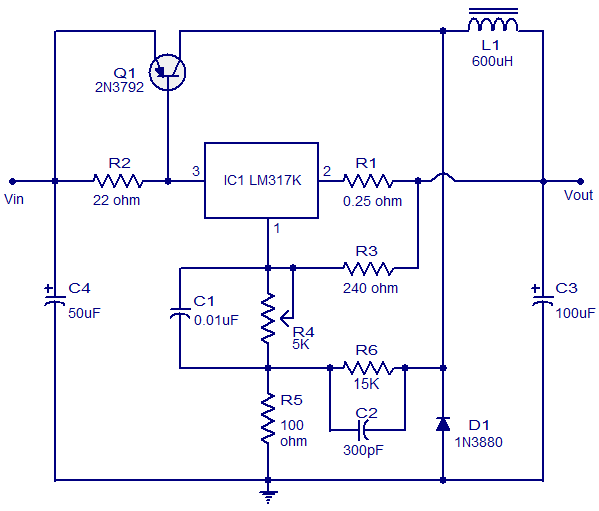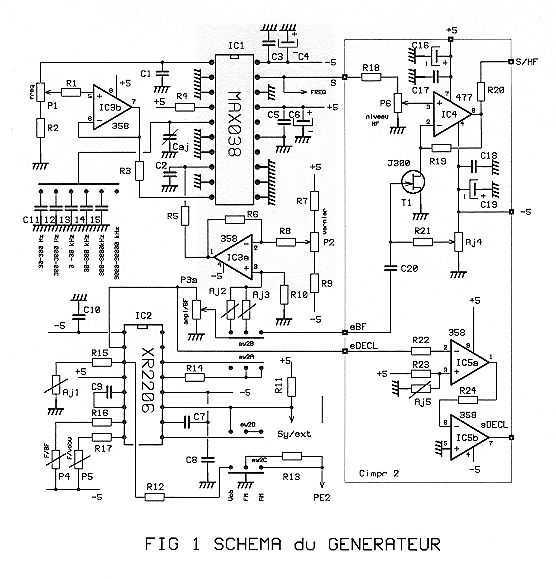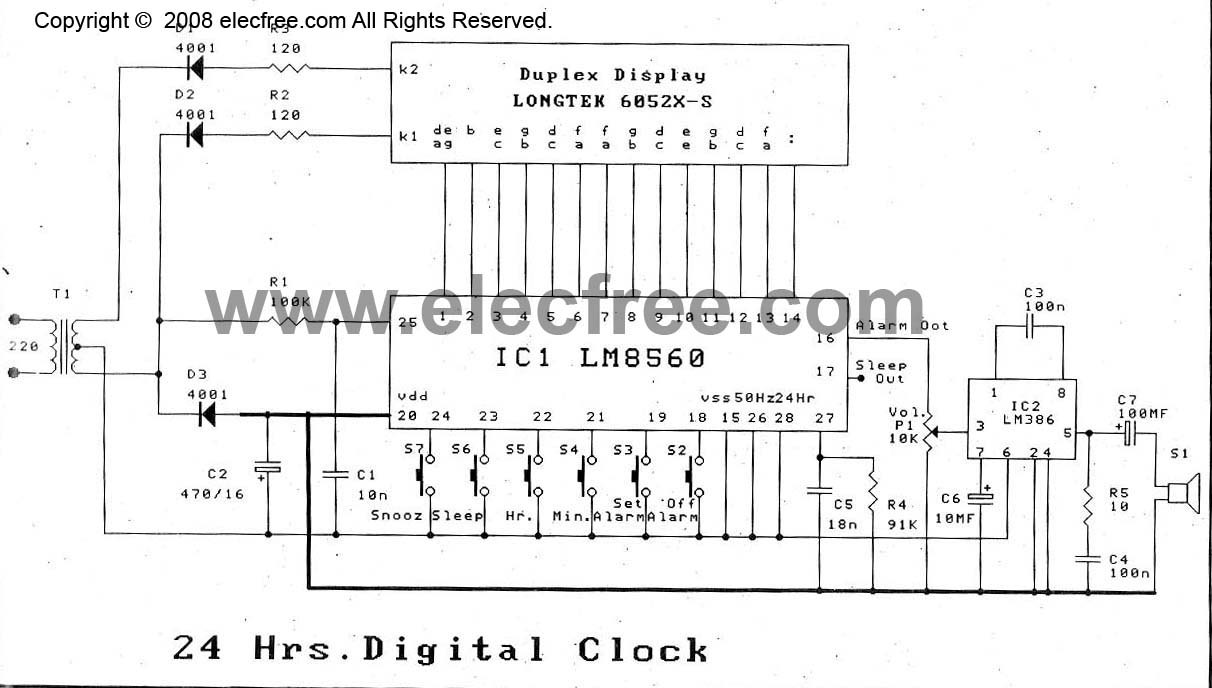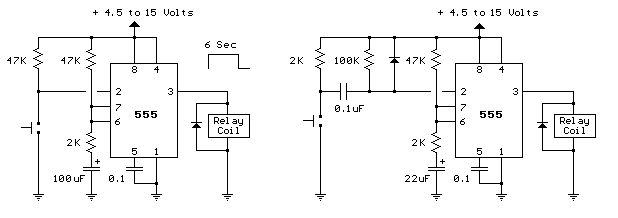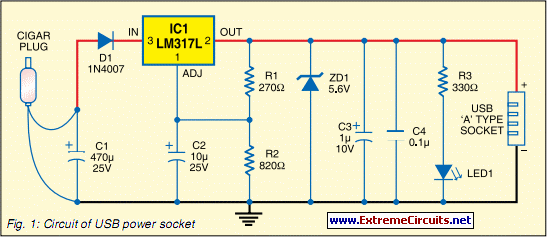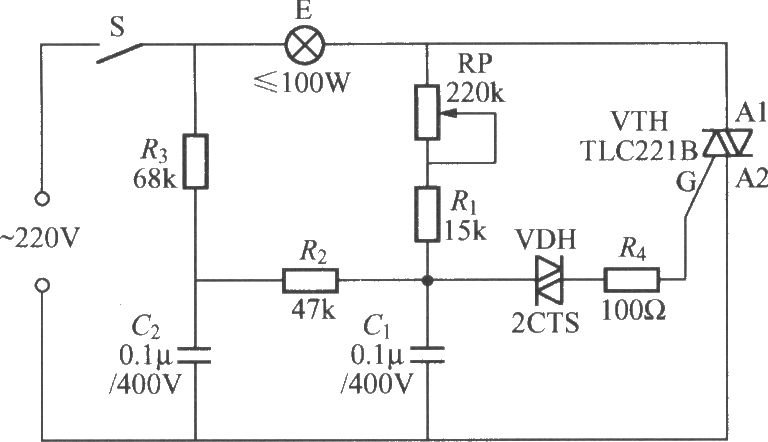
Metronome generator circuit

This is a simple circuit utilizing the NE555 integrated circuit (IC) designed to generate metronomes. Such a circuit is particularly beneficial for music learners. The configuration operates as an astable multivibrator centered around the NE555. The output frequency is determined by the components R1, R2, and C1.
The NE555 timer is a versatile component widely used in various timing applications. In this metronome circuit, it functions in astable mode, continuously oscillating between high and low states to produce a square wave output. The frequency of this output is crucial for generating a consistent beat, which is essential for practice in music.
The resistors R1 and R2, along with the capacitor C1, set the timing interval of the oscillation. The frequency (f) of the output signal can be calculated using the formula:
\[ f = \frac{1.44}{(R1 + 2R2) \cdot C1} \]
Where:
- R1 is connected between the discharge pin (pin 7) and the supply voltage (Vcc).
- R2 is connected from the discharge pin (pin 7) to the threshold pin (pin 6).
- C1 is connected from the threshold pin (pin 6) to ground.
In this configuration, the output frequency can be adjusted by varying the values of R1, R2, and C1, allowing users to set the metronome to their desired tempo.
Additionally, a speaker or piezo buzzer can be connected to the output pin (pin 3) of the NE555 to convert the electrical signal into audible sound. A simple low-pass filter may be integrated to smooth out the signal if necessary, enhancing the sound quality.
This metronome circuit can be powered by a standard DC power supply, typically in the range of 5V to 15V, making it suitable for various applications. The simplicity of the circuit and the low cost of components make it an excellent project for beginners in electronics and music education.Here is a simple circuit using IC NE555 that can be used to generate metronomes. Such a circuit is very useful to those who learns music. The circuit is nothing but an astable multivibrator wired around NE555. The components R1, R2&C1 determines the output frequency. 🔗 External reference
The NE555 timer is a versatile component widely used in various timing applications. In this metronome circuit, it functions in astable mode, continuously oscillating between high and low states to produce a square wave output. The frequency of this output is crucial for generating a consistent beat, which is essential for practice in music.
The resistors R1 and R2, along with the capacitor C1, set the timing interval of the oscillation. The frequency (f) of the output signal can be calculated using the formula:
\[ f = \frac{1.44}{(R1 + 2R2) \cdot C1} \]
Where:
- R1 is connected between the discharge pin (pin 7) and the supply voltage (Vcc).
- R2 is connected from the discharge pin (pin 7) to the threshold pin (pin 6).
- C1 is connected from the threshold pin (pin 6) to ground.
In this configuration, the output frequency can be adjusted by varying the values of R1, R2, and C1, allowing users to set the metronome to their desired tempo.
Additionally, a speaker or piezo buzzer can be connected to the output pin (pin 3) of the NE555 to convert the electrical signal into audible sound. A simple low-pass filter may be integrated to smooth out the signal if necessary, enhancing the sound quality.
This metronome circuit can be powered by a standard DC power supply, typically in the range of 5V to 15V, making it suitable for various applications. The simplicity of the circuit and the low cost of components make it an excellent project for beginners in electronics and music education.Here is a simple circuit using IC NE555 that can be used to generate metronomes. Such a circuit is very useful to those who learns music. The circuit is nothing but an astable multivibrator wired around NE555. The components R1, R2&C1 determines the output frequency. 🔗 External reference
